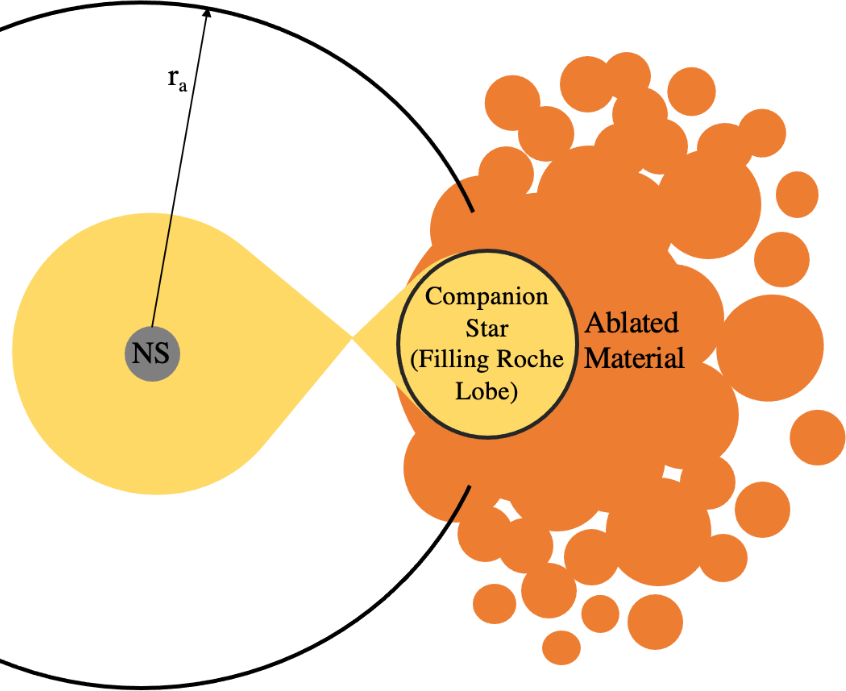NICER / ISS Science Nugget
for October 26, 2023
Spiders springing up
Black widows, redbacks, and false widows -- a ghoulish naming convention, centered on lethal species of spiders, has taken hold of astronomers.
Rapidly rotating neutron stars emit "winds" of particle and electromagnetic radiation powerful enough to strip the outermost layers off of any companion star in a close-in orbit. Over time, this ablation process is widely believed to result in the complete destruction and evaporation of a low-mass companion, the very star responsible for spinning up the neutron star to high rotation rates -- via accretion, effectively bringing it back from the dead -- in the first place. It's not hard to see why such systems are named after spiders that, at least in popular lore, kill their mates when they no longer have a use for them.
Recent work by a team led by A. Knight (Oxford Univ.) used NICER data to explore the companion-star ablation phenomenon in the low-mass neutron-star X-ray binary Swift J1858.6-0814; their paper appears in the peer-reviewed U.K. journal Monthly Notices of the Royal Astronomical Society. Still in its accreting phase, Swift J1858 is the likely precursor of a radio-pulsar "spider" binary, and the team set out to determine whether companion ablation had already begun. Swift J1858 offers a rare opportunity for such a study: it is one of only a handful of accreting neutron-star binaries in which X-ray eclipses are seen as the companion star passes between us and the X-ray-bright accretion disk and neutron star; thus, our line of sight lies close to the system's orbital plane, and the presence of any ablated material may be accessible to observations. Taking advantage of NICER's sensitivity to low-energy X-rays, which are readily absorbed by neutral and ionized atoms in a gas, Knight et al. performed time-resolved spectroscopic analysis of the eclipse ingress and egress intervals captured by NICER during the system's outburst in 2020. Their results show clear evidence of ablated gas surrounding the companion star in three parameters of their spectral model. These results are corroborated in a similar analysis of another eclipsing binary, with data obtained by NICER's predecessor X-ray timing mission, the Rossi X-ray Timing Explorer, and Knight et al. conclude that the ablation mechanism is likely common even during accretion, perhaps hastened by the energetic X-ray emissions of the accretion process. Extending the arachnid analogy, they propose naming such nascent spider systems "false widows."


Left: A sketch, not to scale, of an accreting neutron star, at left, with a companion orbiting at separation r_a. The companion fills its Roche lobe -- i.e., it is puffed up so that its gravity can no longer contain its outer layers, parts of which flow to the neutron star through an accretion disk. Additional material is blown away by radiation, forming a clumpy cloud (orange circles) that is responsible for the observed eclipses and decreases in density as it departs the system. (Credit: Knight et al. 2023)
Right: Observed and derived behavior of the Swift J1858 system around its X-ray eclipses. From bottom to top, the panels show the rate of X-ray photon detections by NICER, the column density of absorbing atoms (the number integrated along the sight-line, N_H), the degree of ionization in the gas responsible for the eclipse, and the obstructed (or "covering," f_cov) fraction of the total flux far from eclipse. Red points in the N_H panel show the column density of the interstellar medium spanning the entire distance between the Earth and Swift J1858. (Credit: Knight et al. 2023)
<< Previous
Main Index
Next >>